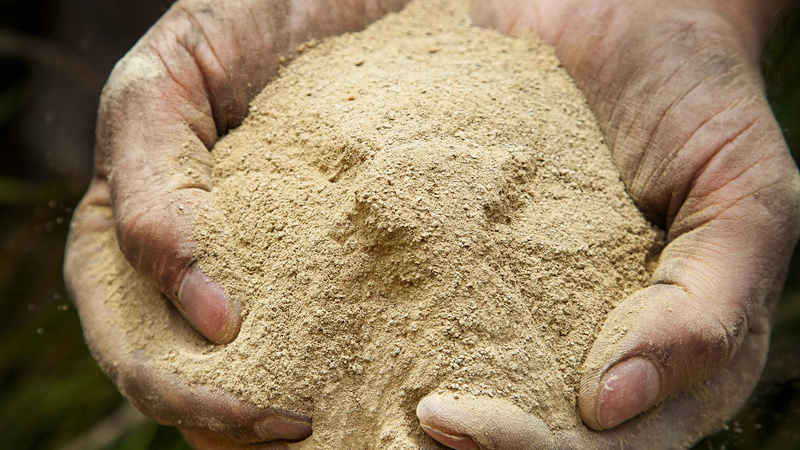
Clay minerals are essential in construction and cosmetic industries.
Clay is a naturally occurring fine-grained mineral substance composed primarily of hydrated silicates of aluminum. It is formed through the weathering and erosion of rocks, particularly those containing aluminum silicate minerals such as feldspar. The process of clay formation begins when rocks are subjected to physical and chemical weathering over a long period. Water, wind, and temperature changes contribute to the breakdown of rocks into smaller particles. The primary minerals in the rocks, such as feldspar and mica, undergo chemical reactions with water and other substances, leading to the formation of clay minerals.
As the rock minerals weather, they gradually break down into smaller fragments and are transported by water or wind. These fragments, consisting of tiny particles, settle in bodies of water or on land, where they undergo further sedimentation. Over time, the particles accumulate and form layers of sediment. The sediments undergo compaction and are subjected to pressure from overlying layers. This pressure helps to remove excess water and air from the sediment, causing the particles to become more tightly packed. The remaining water fills the spaces between the particles, allowing them to stick together.
In general, clays are very soft mineral compounds with fine grains. Different clays have different solutes and compositions, and as a result, different properties. In fact, clays are formed as a result of the erosion of rocks exposed to water and weather over time. Different types of clay with unique properties are very effective in cleaning and strengthening the skin. For centuries, clays have been used in beauty products, especially face masks, and today they are more popular than ever. Different clays have different properties, but their general properties and performance are based on absorption and ion exchange capacity. While using various types of clay in cosmetic products, including clay face masks, these materials clean the skin pores and exfoliate by absorbing fats and impurities. Also, by increasing the blood flow, they help to make the skin clear and fresh.
Clay is formed from the long-term erosion of minerals and contains large amounts of silicon and aluminum in its composition. This soil is formed from the weathering of rocks such as granite and feldspar, it has very small grains that create high adhesion when combined with water. The structural components of this soil consist of four layers and include different types such as kaolinite and refractory soil, normal clay or bentonite clay. Clay has many applications in plant breeding, steel industry, medicine and especially construction. Clay soil is a term that refers to sedimentary rocks containing a significant amount of clay minerals, such as rock. Iran is one of the special regions of the world that has many resources; The export capacity of clay from the waters of Chabahar port to Pakistan shows that Iran has the richest resources.
As the sediment continues to undergo compaction, the particles become aligned and compacted even further. Chemical reactions between the minerals and the water in the sediment contribute to the formation of clay minerals, such as kaolinite, illite, and montmorillonite. These clay minerals have a layered structure and possess unique properties, such as plasticity and the ability to retain water. The final product of this natural process is clay, which can be found in various deposits around the world. It is typically extracted from clay pits or mines through mining operations. Once extracted, clay can be further processed and refined for various applications, including pottery, ceramics, construction materials, and industrial uses.



